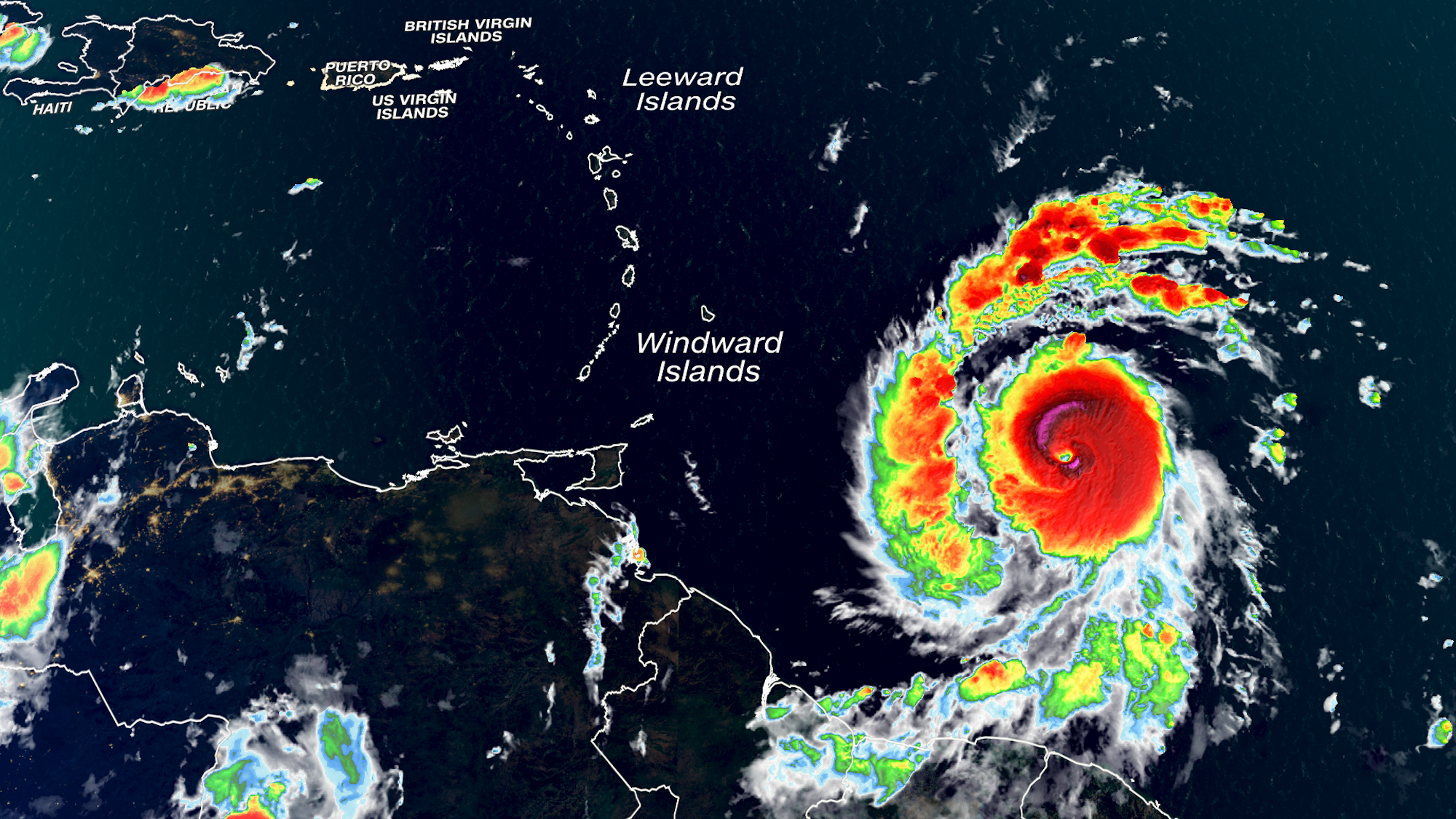Hurricane Beryl’s Impact

Hurricane Beryl, a powerful Category 3 storm, made landfall in the Caribbean on July 10, 2023. The hurricane brought with it strong winds, heavy rainfall, and a significant storm surge, causing widespread damage and disruption.
The hurricane’s path took it across several Caribbean islands, including St. Lucia, Dominica, and Puerto Rico. The strongest winds, with gusts exceeding 120 miles per hour, were recorded in St. Lucia, where the hurricane made its first landfall. The storm surge, which reached heights of up to 10 feet in some areas, caused significant flooding along the coastlines of the affected islands.
The impact of Hurricane Beryl was devastating, with widespread damage to infrastructure, property, and livelihoods. The hurricane destroyed homes, businesses, and roads, and left thousands of people without power or water. The storm also caused significant agricultural damage, destroying crops and livestock.
Impact on Infrastructure
Hurricane Beryl caused extensive damage to infrastructure, including roads, bridges, and power lines. The storm washed out bridges, making it difficult for emergency responders to reach affected areas. The hurricane also damaged power lines, leaving thousands of people without electricity.
Impact on Property, Hurricane beryl
Hurricane Beryl destroyed or damaged thousands of homes and businesses. The storm’s strong winds ripped off roofs and walls, and the storm surge flooded homes and businesses in coastal areas. The hurricane also caused significant damage to vehicles and other property.
Impact on Livelihoods
Hurricane Beryl had a devastating impact on livelihoods, particularly in the agricultural sector. The storm destroyed crops and livestock, and damaged fishing boats and equipment. The hurricane also disrupted tourism, a major source of income for many Caribbean islands.
Response and Recovery Efforts
In the face of Hurricane Beryl, emergency response measures were swiftly implemented to protect lives and minimize damage. Authorities coordinated evacuation procedures, established shelters, and mobilized resources to assist affected communities.
Evacuation Procedures and Shelters
As the hurricane approached, evacuation orders were issued for coastal areas and low-lying regions. Local governments designated shelters in schools, community centers, and other public buildings to provide safe haven for those unable to evacuate their homes.
Resource Mobilization and Coordination
Relief organizations, government agencies, and volunteers worked tirelessly to provide assistance to those impacted by Hurricane Beryl. Food, water, medical supplies, and other essential items were distributed to affected communities.
Challenges in Relief Coordination
Coordinating relief efforts in the aftermath of a hurricane can be a complex task. Challenges include:
- Infrastructure damage, which can hamper communication and transportation.
- Limited access to affected areas, particularly in remote or heavily damaged regions.
- The need to prioritize assistance to those most vulnerable, such as the elderly, children, and those with disabilities.
Lessons Learned and Future Preparedness: Hurricane Beryl

Hurricane Beryl provided valuable lessons that can enhance future hurricane preparedness and response plans. By analyzing the strengths and weaknesses of the current strategies, we can develop more effective measures to mitigate the impact of future storms.
Evacuation Plans
Evacuation plans should be comprehensive and tailored to the specific needs of each community. They should clearly identify evacuation routes, shelters, and transportation options. Regular drills and exercises are crucial to ensure that residents are familiar with the plans and know what to do in an emergency.
Emergency Kits
Every household should have an emergency kit that includes essential supplies such as food, water, first aid, and medications. These kits should be easily accessible and stored in a safe location. It is also important to have a plan for pets and livestock.
Community Engagement
Community engagement is vital for effective hurricane preparedness. Local officials should work closely with community organizations, businesses, and residents to develop and implement preparedness plans. This includes providing information about hurricane risks, evacuation procedures, and resources available to residents.
Early Warning Systems
Early warning systems provide critical lead time for evacuation and other protective measures. These systems should be continuously updated and improved to ensure they provide accurate and timely information to residents.
Disaster Risk Reduction Measures
Disaster risk reduction measures, such as building codes and land use planning, can help to reduce the impact of hurricanes. These measures should be based on sound scientific data and tailored to the specific risks faced by each community.
Post-Hurricane Recovery Strategies
Post-hurricane recovery strategies should focus on providing immediate assistance to affected communities and rebuilding infrastructure and services. These strategies should include plans for debris removal, housing assistance, and economic recovery.
The howling winds of Hurricane Beryl reminded me of the ominous whispers of the virus. Just as the hurricane wreaked havoc on the landscape, so too did the new COVID variants spread fear and uncertainty. The symptoms—from persistent coughs to shortness of breath—echoed the relentless onslaught of the storm.
But as the storm passed, leaving behind a path of destruction, so too did the hope of recovery linger, carried on the wings of resilience and scientific advancement.
Hurricane Beryl, with its swirling winds and relentless rain, battered the coastline, leaving a trail of destruction in its wake. Amidst the chaos, Governor DeSantis’s recent vetoes drew criticism, as some saw them as hindering efforts to rebuild and provide relief to those affected by the storm.
However, despite these setbacks, the spirit of resilience prevailed, and communities rallied together to face the aftermath of Hurricane Beryl.
